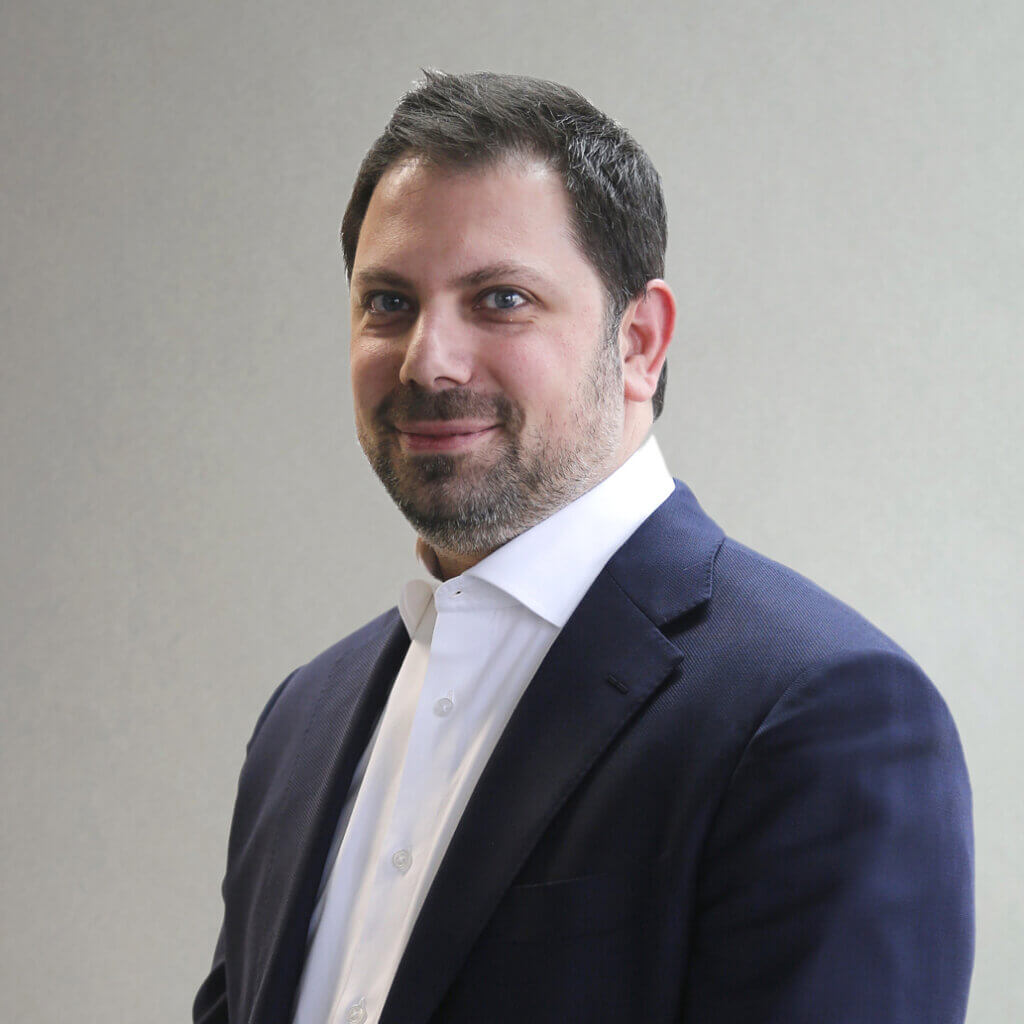
Private Equity: outlook for 2024
Tim Toska
Global Sector Head, Private Equity
What to watch out for 2024:
- Securing exits will be the number one priority for GPs in 2024, as they strive to return cash to LPs and get fundraising moving again
- GPs will explore all routes available to them to realise liquidity, including alternative GP-led secondaries and using NAV loans to make distributions
- LPs will use secondaries markets extensively too, exiting existing holdings to free up cash and make commitments to the new funds of top tier managers
- The peak of the interest rate cycle should reignite M&A and IPO markets, helping to clear the backlog of unexited assets sitting in GP portfolios
The private equity industry goes into 2024 coming off the most challenging period for the asset class in more than a decade.
The combination of rising interest rates, higher acquisition finance costs and geopolitical dislocation have had a chilling effect on year-on-year buyout, exit and fundraising activity.
According to law firm White & Case, global buyout deal value has almost halved in 2023, falling to $442.2 billion over the first nine months of the year from $864.96 billion over the same period in 2022. The drop in year-on-on-year exit value has been similarly precipitous, contracting 51% to $240.75 billion over the same period.
Jammed up deal markets have had a direct impact on fundraising. As exits have dried up, managers have been unable to realize value and return cash to investors. According to Burgiss data quoted by Bloomberg, private equity limited partner (LP) cash flows have turned deeply negative, with the gap between capital calls and distributions widening to levels greater than the observed in the depths of the 2008 global financial crisis.
The lack of liquidity has left LPs with limited headroom to make allocations to the next vintage of funds, with private equity fundraising cooling to its slowest rate in years, according to Pitchbook figures cited by Bloomberg.
The exit imperative: liquidity the priority for 2024
Looking ahead to 2024, the number one priority for the general partner (GP) community will be unblocking the fundraising bottleneck by getting cash back into the hands of investors, and the best way to do that will be to fire up exit deal value again.
According to Bain & Co analysis, buyout funds alone are sitting on an all-time high $2.8 trillion of unexited assets in their portfolios – more than four times higher than the thresholds recorded during the global financial crisis. Finding buyers for these assets and returning cash to LPs will alleviate the pressure on investor cash flows and get fundraising moving again.
Of course, the challenge for GP vendors during the last 18 months has been to find buyers willing to meet valuation expectations for assets. As interest rates have climbed, establishing consensus on pricing has become increasingly difficult. No GP has wanted to offload a good asset at bargain valuation at the bottom of the cycle, while buyers have found it very difficult to structure deals when there is limited visibility on future earnings and financing costs. The result has been M&A stalemate.
Creativity required
GPs will be exploring all options available to them for realizing liquidity and returning cash to investors in 2024 if conventional exit routes (strategic sales, secondary buyouts and IPOs) remain becalmed.
The market has already observed and tested what some of the options could be. More GPs are now exploring GP-led secondaries deals when planning exit routes, and are expected to continue doing so in numbers in the year ahead.
These structures, which see selected assets placed into continuation funds, give LPs the option to take liquidity or rollover their stakes in the asset into the continuation fund. For GPs with good assets, but under growing pressure to make distributions to investors, a continuation fund can provide tidy solution that allows for LPs to receive cash without managers having to sell off prized portfolio companies at bargain prices in bear market.
According to Jefferies, these GP-led deals account for 42 percent of overall secondaries deal value in H1 2023, which although down on the share observed in. the bull market of 2021, is significantly higher than pre-pandemic levels.
LP-led deals (where investors sell their stakes in funds to secondaries funds) will also be a key dynamic in the asset class in 2024. LPs have increasingly taken direct control of their cashflows by using secondaries deals to expedite routes to liquidity. LP-lead deals accounted for less than half of total secondaries deal value in 2021, but share has climbed to 58% in 2023, according to Jefferies.
Secondaries sales will remain an important tool for investors in 2024, especially when elite managers come to market with new vintages. LPs who don’t have immediate access to liquidity to allocate to these blue-ribband GPs will turn to the secondaries market to exit existing holdings in order to make commitments to their preferred firms.
Another route to liquidity GPs are exploring are NAV loans, where managers take out debt secured against the assets in fund and use the proceeds to make distributions. These arrangements are still relatively novel (and not without controversy, as distributions can be recalled if GPs can’t repay the NAV debt), but some high-profile private equity brands have put NAV loans in place to make distributions and others may follow suit.
Traditional exit routes: reason for optimism
There is growing, but still cautious, optimism that conventional exit routes will also start to unfreeze in 2024.
The outlook for interest is underpinning this sanguinity. After enduring the steepest pace of rate hikes in more than four decades central banks around the world do appear to have hit peak rates.
GPs would prefer rates to be lower than they are, but even if rates do stay at current elevated levels, there is at least some clarity in the market on what interest rate assumptions to build into deal models. This will go a long way to recalibrating buyer and seller pricing expectations, narrow the bid-ask spread on valuations and hopefully get deal markets flowing again.
There are already early signs that a more stable outlook is opening up traditional IPO and M&A markets. In 2023, buyout firm GTCR went ahead with the largest deal in its history with the $18.5 billion carve-out of payments company Worldpay from Fidelity National Information Services, in transaction that enjoyed strong support from debt markets.
After challenging year, GPs will be hoping that more landmark transactions will come to market in 2024.
Private Debt: outlook for 2024
Greg Myers
Global Sector Head, Debt Capital Markets

What to watch out for in 2024:
- Private debt is ideally positioned for a golden vintage in 2024 as high interest rates drive up yields and capital structures become more conservative
- LP appetite for private debt exposure will remain strong as investors seek exposure to the asset class’s strong underlying fundamentals
- Distinctions between bank and debt fund capital will blur as investment banks and Private Credit Managers build out their direct lending offerings
- The resilience of portfolios will become a key differentiator in a market that will bifurcate
There haven’t been many asset classes that have benefitted from the current cycle of interest rate hikes. Private debt is one of them.
Despite volatile stock markets, a sharp contraction in M&A deal flow and stultified leveraged loan and high yield bond markets, private debt managers have continued to secure investor capital and find opportunities to deploy capital in a tough environment.
According to Pitchbook private debt delivered double-digit year-on-year fundraising growth in 2023, putting the market on track to deliver annual fundraising in excess of $200 billion for the fourth year in a row.
Steady distributions and attractive yields draw investors
The strong performance of the asset class in 2023 has positioned private debt to potentially deliver one of its best vintages ever in 2024.
As base rates are now sitting in the region of five percent, private debt managers can realistically expect to produce yields in the 10 percent to 12 percent range, according to analysis from Barings. The gap to equity returns is not very wide, and with private debt consistently delivering high, double-digit distribution rates, the risk-reward dynamics presented by the asset class w2ill be among the most compelling for investors in 2024.
Private debt managers will also continue to benefit from supply-demand dislocation in wider lending markets. Syndicated loan and high yield markets have been stung by higher interest rates and all but shuttered, with banks reluctant to take on syndication risk at such an unpredictable period in the credit cycle.
According to White & Case figures, leveraged loan and high yield bond issuance across North America and Western and Southern Europe over the first nine months of 2023 declined by almost a fifth year-on-year from $1.13 trillion in 2022 to $920.54 billion this year.
Tightening loan and bond markets and cautious banks have allowed private debt managers to cherry pick deals and issue debt not only at higher interest rates, but also with lower leverage and lender-friendly capital structures.
Reshaping an asset class
The strength of the $1.5 trillion private credit space will drive ongoing and significant evolution of the asset class, with 2024 shaping to be a groundbreaking year.
In the second half of 2023 a growing cohort of banks made strategic moves into private debt, either as cornerstone investors in private lending firms, as seen in Rabobank’s investment in sustainable private lender Colesco; through partnering with private markets platforms, as seen with Societe Generale planning to raise a €10 billion credit fund with Brookfield; or launching dedicated private credit managers inhouse, as Deutsche Bank has done.
More banks, nervous about losing lucrative streams of leveraged loan and high yield fee income to competition from private debt, are expected to make similar strategic moves and step into private credit in some shape or form in 2024. This will blur the lines between the two types of providers and reconfigure the way borrowers look at their financing options in the future.
Default risk looms
The one cloud that will hang over private debt in 2024, however, will be looming default risk.
Private debt as an asset class only really came onto the radar as a credible alternative to conventional bank-led lending after the 2008 financial crisis, when banks retrenched from the market to rebuild balance sheets and manage legacy portfolios.
Since then, private debt assets under management have expanded at pace, as managers seized the opportunity to fill the gap in the market left by the banks. The asset class, however, has never been truly tested through a downcycle and borrowers and investors will be watching closely to see how managers behave when portfolios do become stressed.
Bank of America estimates that the private debt default rate could reach 5% by early 2024, exceeding default rates for syndicated loans. From 2024 onwards, roughly a third of deals in debt fund portfolios will be maturing within 30 months, according to Bloomberg.
Many of these maturing credits would have been issued in bull credit markets and characterized by high levels of leverage and loose terms. Some managers, who were eager to gain market share and took on more marginal transactions with aggressive capital structures, will be particularly exposed.
Bigger platforms didn’t have to chase the market in 2021 and 2022 and are likely to have more resilient portfolios, as well as the resource to manage out any credits that may fall into stress. Newer managers with smaller teams will come under much more pressure if portfolios do become stressed.
This is likely to drive a bifurcation of the market in 2024, as top tier private debt funds take up a growing share of private debt deal flow and fundraising, while smaller firms find that their teams stretched as they try to shepherd current portfolios through distress at the same time as trying to originate new deals.
Evidence of this bifurcation has already started to emerge, with Pitchbook reporting that the number of funds new private debt funds closing has contracted by more than 25 percent, even though year-on-year private debt fundraising value has climbed. This signals that LPs have already begun to focus on relationships with fewer, bigger private debt funds, which are becoming increasingly dominant forces in the market.
Great opportunity lies ahead for private debt managers in 2024 – but there may be fewer managers around to take advantage of it.

Real Assets: outlook for 2024
Anita Lyse
Global Sector Head, Real Assets
What to watch out for in 2024:
- Interest rate stability will help revive real asset fundraising and deal activity after a difficult 2023
- Bid-ask spreads on real assets should level off although the market will bifurcate according to asset quality and subsector
- Fundraising will pivot decisively to established managers with larger platforms
- Energy transition will be a key driver of long-term real assets growth
Real assets managers will be hoping that cooling inflation and interest rate stability improve conditions for fundraising and investment in 2024 after a difficult 12 months.
Real assets have felt the full force of geopolitical and macro-economic volatility. According to PERE, real estate fundraising contracted to $92.8 billion during the first nine months of 2023, a 38 percent decline on the $150.4 billion secured over the same period last year. The current run rate could see real estate fundraising come in at the lowest annual level observed since 2012. Infrastructure fundraising has slowed significantly too, with CBRE analysis of Infralogic data showing a decline to the lowest levels in more than a decade.
Hopes for stability
The headwinds that real assets investors have faced through the course of 2023 will persist into 2024.
In the real estate space higher capital costs and conservative underwriting will a remain a feature of the market according to JLL analysis, as companies reassess post-pandemic office requirements; logistics operators reconfigure warehouse portfolios amidst pressures on consumer spending; and investors take longer to make decisions when deploying capital.
In infrastructure, meanwhile, leveraged plays in sub-sectors such as telecoms towers and utilities will remain challenging. According to State Street, rising interest rates have made investments in competing, higher income asset classes more attractive than infrastructure plays, while climbing energy costs and falling global exports weigh on bottom line profitability. According to CBRE these dynamics have seen investors demur from committing to long-term, capital-intensive projects at a high point in the interest rate cycle.
There is nevertheless a degree of cautious optimism that the market backdrop for real assets investment strategies will improve in 2024, albeit below the levels achieved in the bull market of 2021 and early 2022. Interest rates will be the key barometer for a recovery in activity, with JLL expecting a steadier market to emerge should inflation continue its downward trajectory and interest rates stabilize. This could help to bring buyer and seller pricing expectations closer together following a period of volatile pricing shifts and limited deal flow on which to establish consensus on valuations.
Big platforms to dominate
As demand for alternative asset services grow alongside developments in other alternative asset classes, investors will commit the capital they do have available to bigger managers with large investment platforms in an effort to mitigate downside risk in a still choppy deal market. This shift is increasingly being observed among alternative asset managers responding to investor preferences for scale and stability.
Blackstone, for example, has raised at least €4 billion towards its seventh flagship European real estate fund since launching in April 2023, securing more than $3 billion of commitments in Q3 2023 alone. Copenhagen Infrastructure Partners (CIP), meanwhile, has raised €5.6 billion towards the €12 billion targeted for its fifth flagship, while Artemis Real Estate Partners closed its Artemis Fund IV on $2.2 billion, beating its $1.5 billion target.
Large real assets managers have also had the scale and resources to ramp up new strategies where they see opportunity and secure investor support. Real estate debt is one area that has seen a significant uptick in activity. Bain Capital and TPG are among the firms to launch new dedicated real estate debt strategies, while PIMCO closed its sophomore Commercial Real Estate Debt Fund on $3 billion to beat its $1 billion target.
Prolonged fundraising and reduced capital inflows in a slow exit market will also see managers across the board rethink their own operational models and running costs. Outsourcing back-office and middle office infrastructure will move firmly into the frame as firms prioritize reducing staff costs and other overheads.
Energy transition to drive long-term growth
One subsector that will animate real assets fundraising and deal activity for managers of all size is energy transition.
Delivering net zero emissions will require substantial investment, with McKinsey forecasting that $9.2 trillion of annual capital spending will be required between 2021 and 2050 to meet decarbonization targets.
Government and corporate commitments to securing the required investment to meet net zero target have insulated renewable energy and decarbonization projects from market volatility, with capital continuing to flow into these areas despite dislocation in other segments of the real assets space. The US Inflation Reduction Act and Europe’s Green Deal and REPowerEU initiative are among the global initiatives that have encouraged private sector investment into decarbonization.
For real assets managers these dynamics has driven substantial investor appetite for decarbonization and renewables investment strategies.
According to the Long-term Infrastructure Investors Association (LTIA), funds dedicated or partly dedicated to renewable energy have accounted for more than 90% of overall infrastructure fundraising since 2019. This secular pivot towards strategies with an energy transition theme has fed a swelling pipeline of renewable energy deal opportunities, with CBRE analysis of Infralogic data putting global live deal pipelines for renewables at around $3.6 trillion.
Real assets deal activity and valuations wills also become increasingly shaped by broader environmental, social and governance (ESG) concerns that extend beyond energy transition in wider areas of sustainability and energy and water conservation.
In infrastructure and real estate ESG has shifted from a “nice to have” to an essential part of a license to operate. Through the course of 2024 we expect ESG to become an important element of asset valuations, with widening valuation gaps between assets where ESG is embedded into operations and assets where ESG hasn’t been prioritized.
As market conditions improve through 2024 other areas of the market will rally, but energy transition and ESG will remain a key long-term driver for real assets fundraising and deal activity.






















